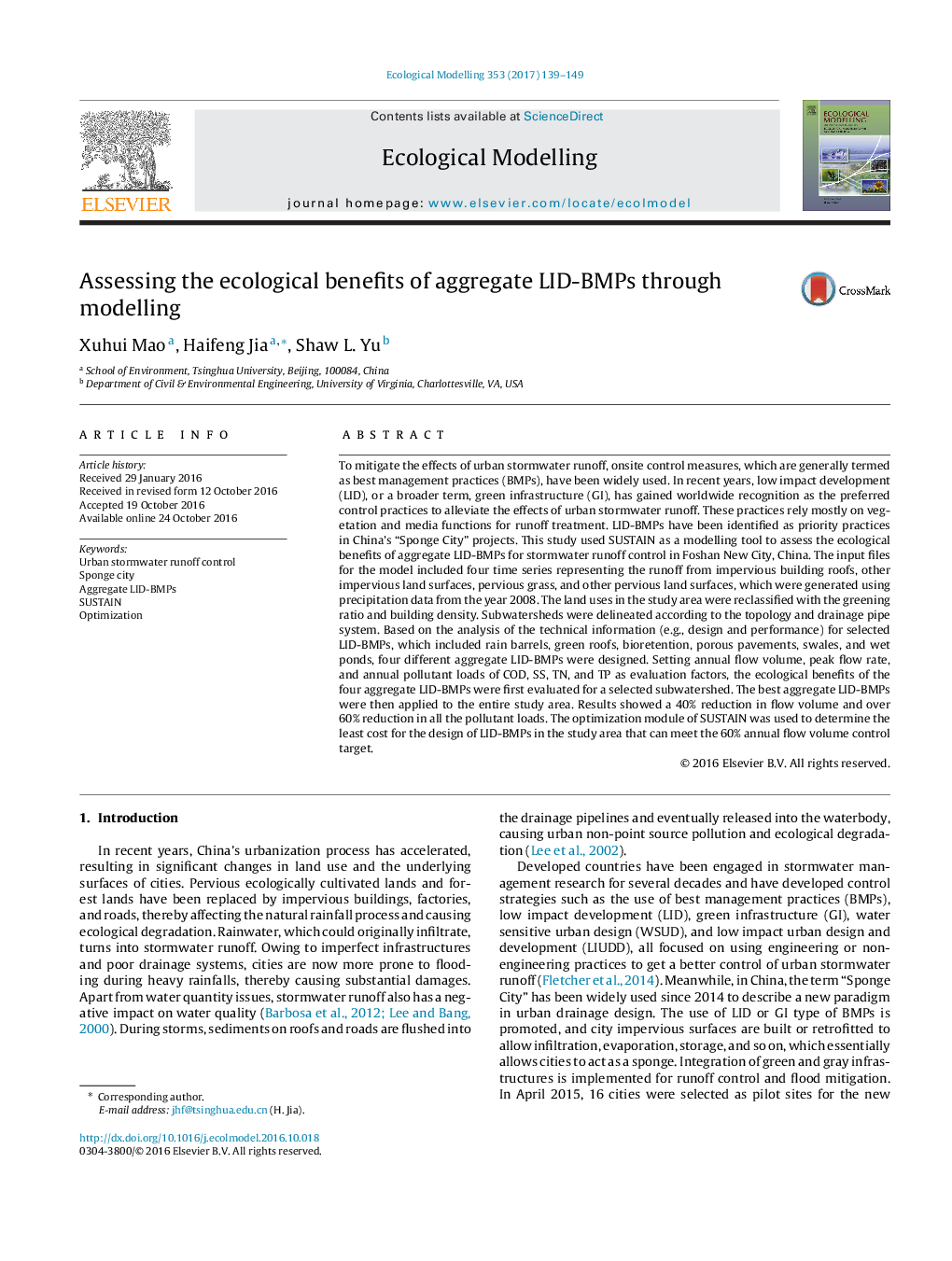| کد مقاله | کد نشریه | سال انتشار | مقاله انگلیسی | نسخه تمام متن |
|---|---|---|---|---|
| 5742174 | 1617394 | 2017 | 11 صفحه PDF | دانلود رایگان |

- SUSTAIN was used to assess the benefits of LID-BMPs in a regional scaled area.
- Four aggregate LID-BMPs with different treatment train were designed.
- After optimization, the study area could meet China's Sponge City control target.
- The cost of the aggregate LID-BMPs was analyzed and compared.
To mitigate the effects of urban stormwater runoff, onsite control measures, which are generally termed as best management practices (BMPs), have been widely used. In recent years, low impact development (LID), or a broader term, green infrastructure (GI), has gained worldwide recognition as the preferred control practices to alleviate the effects of urban stormwater runoff. These practices rely mostly on vegetation and media functions for runoff treatment. LID-BMPs have been identified as priority practices in China's “Sponge City” projects. This study used SUSTAIN as a modelling tool to assess the ecological benefits of aggregate LID-BMPs for stormwater runoff control in Foshan New City, China. The input files for the model included four time series representing the runoff from impervious building roofs, other impervious land surfaces, pervious grass, and other pervious land surfaces, which were generated using precipitation data from the year 2008. The land uses in the study area were reclassified with the greening ratio and building density. Subwatersheds were delineated according to the topology and drainage pipe system. Based on the analysis of the technical information (e.g., design and performance) for selected LID-BMPs, which included rain barrels, green roofs, bioretention, porous pavements, swales, and wet ponds, four different aggregate LID-BMPs were designed. Setting annual flow volume, peak flow rate, and annual pollutant loads of COD, SS, TN, and TP as evaluation factors, the ecological benefits of the four aggregate LID-BMPs were first evaluated for a selected subwatershed. The best aggregate LID-BMPs were then applied to the entire study area. Results showed a 40% reduction in flow volume and over 60% reduction in all the pollutant loads. The optimization module of SUSTAIN was used to determine the least cost for the design of LID-BMPs in the study area that can meet the 60% annual flow volume control target.
Journal: Ecological Modelling - Volume 353, 10 June 2017, Pages 139-149